Batik Motifs
By anhe51 Batik as a trational textile of Java atually has a lot of motifs, several of those, especially that originated from Keraton (Javanese Kingdom) have a sacred rule and deep meaning. Generally Batik motifs are classified into nine, Lereng, Semen, Parang, Truntum, Kawung, Gringsing, Ceplok, Nitik, Pinggiran, and Terang BulanLereng Motif
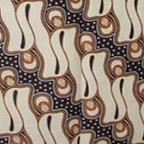
‘Lereng’ (literally means ‘Cliff’) history began at the escape of royal family from Surakarta, they had to hide in the mountains area for their safety, and the Sultan look at the cliff, which became the inspiration to make Lereng motif.
Fundamentally, the deisgn of Lereng is the same with Parang, some says that Jogjanese called it parang and Surakartanese called it Lereng. It’s one of Motif Larangan (Prohibited Motifs) that only royal families could wear. But nowadays, some of Lereng/Parang motif, could be wear by people outside the Keraton, except for some sacred motifs.
Semen Motif
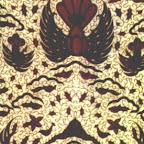
‘Semen’ word originated from ‘Semi’ that literally means bloom, the motif reflects prosperity and and fertility. The history is originated from Hindu mythology, that tells the story of Sri Rama giving the advice to his son, Gunawan Wibisana, when Wibisana was about to be crowned as the king. The advice is known as Hasta Brata (Eight Bratas) that a leader should have.
- Indrabrata
Means a dedication to give the prosperity and protect the earth, symbolized by plants. - Yamabrata
Means fair and honest to the others, symbolized by mountains or cloud that reflects a high position - Suyabrata
Means courage not half hearted, symbolized by Garuda - Sasibrata
Means give the light and cheer to whom that feel sad, symbolized by animals - Bayubrata
Means the high position that doesn’t expose its authority, symbolized by bird - Danababrata/Kuwerabrata
Means give respect or appreciation to the people, symbolized by relic - Barunabrata/Pasabrata
Means a forgiving, symbolized by dragon or something related with water - Agnibrata
Means a power to fight against evil and protect the weak, symbolized by fire or flame
Parang Motif
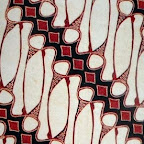
‘Parang’ literally means sword or knife, this motif reflects alertness, guard and sharp. By wearing Parang motif, the person could be alert, have a sharp think, and gifted with glory. The bigger Parang means bigger authority, this motif is one of Motif Larangan (Prohibited Motifs) that only royal families could wear. The King, as the highest authority in the kingdom wears the biggest parang motif. Parang design is usually alternated with narrower bands in a darker contrasting color in which another motif called ‘Mlinjon’ is located which differentiated Parang from Kawung Motive.
Truntum Motif
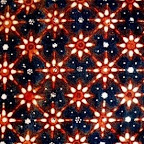
Truntum motif is worn by the parents in their children’s wedding, it’s a symbol that parents can guide or give model to their children to accomplish their own peace in time of entering family life. There’s some verisons that the word ‘truntum’ originated from. First, it derives from ‘tumaruntum’, which means guiding or often is connected to ‘tentrem’, literally means peaceful. Second, it derives from word ‘tuntun’ literlally meaning guidance.
It was believed that this motif was created by Ratu Beruk, the consort of Sunan Pakubuwono II (King of Surakarta, 1749 – 1788). She was upset because her husband ignored her. For a long time, her husband did not visit the queen. Only stars in the sky accompanying her patiently.
Every second she spent her time attaching chanting to batik wax. One day Sunan was home from hunting, coming to her dwelling. He found the queen diligently making batik, drawing animals. Seeing the king arrived, Ratu Beruk’s love sprouted again. The king then was very patient accompanying her making batik.
Gringsing Motif
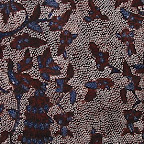
‘Gringsing’ word originated from words ‘Gering’ that means sick and ‘Sing’ that means not. So Gringsing means not sick or against illness. This motif believed to be able to cure the illness. This is one of ancient motif inspired by Patola clothes that originated from India. The motif resembling the snake skin and generally used in backgrounds.
Kawung Motif
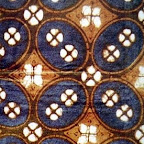
Some say that Kawung is a kind of palm tree having ellipse-shaped fruit, with color of white called “Kolang-Kaling”. Others say that kawung comes from a name of insect ‘Kwangwung’. It believed that this motif created by Sultan Agung of Mataram.
The ornaments consist of four symmetric circles surrounding a little circle in the middle that symbolizes ‘Kiblat Papat-Kelimo Pancer‘ (four sources of energy that surrounding the centre of power, God that rules every direction). East is a direction of sunrise, the symbol of life source. North is a direction of mountain, symbol of gods’ dwelling, place of spirit/death. West is a direction of sunset, the coming of luck. South is a direction of zenith, peak of everything.
This motif brings hope that the user is given strength to rule well and have a meaningful life, like the palm tree that useful for everyone from the root to leaf.
Ceplok Motif
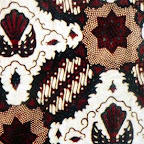
‘Ceplok’ originated from ‘Seceplok’ that means ‘A Bud’. This motif is a modification from Kawung Motif, with ‘Kiblat Papat-Kelimo Pancer’. Although fundamentally geometric, ceplok can also represent abstractions and stylization of flowers, buds, seeds, and even animals. It’s an ancient motif that can be found at the Hindu Temple. Variations in color intensity can create illusions of depth and the overall effect is not unlike medallion patterns seen on turkish tribal rugs. But in Moslem’s rule forbids the portrayal of animal and human forms in a realistic manner. To get around this prohibition, the batik worker does not attempt to express this matter in a realistic form. A single element of the form is chosen and then that element is repeated again and again in the pattern.
Nitik Motif
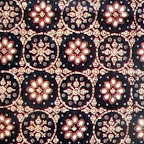
This motif is believed to be influenced by Indian cloth named ‘Patola’, that brought to Indonesia by Indian trader. This motive was developed from coast cities in the north of Java, like Cirebon and Pekalongan before it arrived in Keraton. The pattern consist of square and rectangle form and dots as ornaments. There’s a differences in the color used in every place, in Pekalongan the dominant colors are red, green, blue and yellow as the consumer of this cloth are from India and China. Jogja’s Nitik are using indigo, brown and white color.
Pinggiran Motif
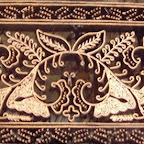
‘Pinggiran’ literally means ‘Edge’. This is actually a motif located at the edge of the batik cloth.
Terang Bulan Motif
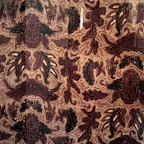
‘Terang Bulan’ literally means ‘Moonshine’, basically it’s a motif consist of triangle pattern ascending vertically in a simple backgrounds. The ornaments are only in the bottom part of Batik.


 Assalamualaikum im Rinda. of Rinda Marestiani. Asli Blitar Jawa timur,,, '94 Generation. Memiliki Ibu yang luar biasa bernama Sudarwati dan Bapak super hebat bernama Suroso. Nah pada tanggal 15 Agustus 2014, tepatnya jika menurut kalender islam pas bulan syawal, di peristri sama lelaki hebat keturunan Madiun Sumbawa yang bernama Candra Aditya. Kesibukan saat ini full time be a lovely wife, learn blog, and 24 jam nemeni suami kerja. Thanks
Assalamualaikum im Rinda. of Rinda Marestiani. Asli Blitar Jawa timur,,, '94 Generation. Memiliki Ibu yang luar biasa bernama Sudarwati dan Bapak super hebat bernama Suroso. Nah pada tanggal 15 Agustus 2014, tepatnya jika menurut kalender islam pas bulan syawal, di peristri sama lelaki hebat keturunan Madiun Sumbawa yang bernama Candra Aditya. Kesibukan saat ini full time be a lovely wife, learn blog, and 24 jam nemeni suami kerja. Thanks







